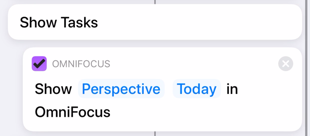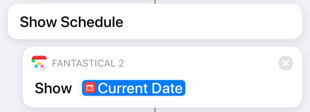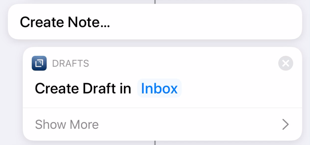At first, I dedicated the prime real estate on my iPhone’s home screen to the apps at the core of my productivity: OmniFocus, Fantastical, Drafts, and Day One. Keeping them in the Dock was a visual reminder that my phone was a productive tool, not a toy for playing Bejeweled whenever I was standing in line.
Gradually, I realized that this arrangement wasn’t helping me stay as focused as I had hoped it would. There were lots of other apps that I used regularly, some far more frequently than I created a journal entry. I’d swipe back and forth between screens, hunting for an app that was buried on page two of a folder somewhere, before giving up and searching for the app using Spotlight. Not only did this waste time, but I’d get distracted by other apps and little red dots.
Not productive.
So I grouped all my planner apps into a folder and added that to my Dock. Always accessible, ever visible, it was supposed to help keep me on task. A few other folders full of frequently-used apps joined them in the Dock. It was an improvement, but it still wasn’t perfect. (Nothing ever is.)
For one thing, apps that I rarely use get grouped into these Dock folders, and there’s a lot of visual clutter. What’s in the Dock should be focused, useful, and beautiful.
Shortcuts is now built into iOS (as of iOS 13). This lets us think about how we organize our home screen in a completely new way. Instead of thinking about the app we’re going to use to accomplish a task, we can think in terms of tasks themselves.
Let’s use this concept to create a quick action list of the most common tasks in our digital planner: view our today list in OmniFocus, view today’s schedule in Fantastical, and save a new note in Drafts.
Creating the Shortcut
First, we need to create the shortcut and add it to the home screen.
- Open Shortcuts.
- Create a new shortcut.
- Tap the three dots.
- Give it a descriptive name. “Planner” is fine. You won’t see this in the Dock, but you’ll see it when you open the Shortcuts app.
- Give it an icon you like.
- Tap Add to Home Screen. This creates a shortcut to the shortcut on your home screen. You can add it to the Dock or organize it into a folder, like any other app.
Creating a List of Actions
Right now, the shortcut is empty. Let’s make it do something.
- Tap “Add Action”.
- Search for “Choose from Menu”. Tap it when you see it.
- Leave Prompt blank.
- Replace the two default items (“One” and “Two”) with the following:
- Show Tasks
- Show Schedule
- Create Note…

If you run the shortcut, it will show you the three items, or let you cancel. Let’s add some actions so that tapping on an item does something.
Filling out the Actions
Below the Choose from Menu action, you’ll see each menu item listed. This is where you will put the actions you want to perform when you select that item from the popup menu.
In this example, all the actions are single-step actions, but you can put anything you want in these branches. You can even call out and run other shortcuts.
Show Tasks
For this action, we want to open OmniFocus to our Today perspective.
- Tap the blue plus button below the Choose from Menu action.
- Search for OmniFocus.
- Tap “Show in OmniFocus”.
- Change “Type” to “Perspective”.
- Tap “Perspective” and pick your Today perspective.
Drag the Show in OmniFocus action up into the View Tasks branch of the Choose from Menu action.

Show Schedule
For this action, let’s open Fantastical to see today’s schedule.
- Tap the blue plus button below the Choose from Menu action.
- Search for Fantastical.
- Tap “Show in Fantastical”.
- Change “Menu Result” to the magic variable “Current Date”. The default date format options are fine.
Drag the Show in Fantastical action up into the View Schedule branch of the Choose from Menu action.

Create Note…
For this action, we’re just going to open Drafts so we can start typing a note.
- Tap the blue plus button below the Choose from Menu action.
- Search for Drafts.
- Tap “Create Draft”.
Drag the Create Draft action up into the Create Note… branch of the Choose from Menu action.

You can edit the shortcut at any time in Shortcuts. Start simple and iterate as you learn what you use and what you wish you could do.
Instead of just opening OmniFocus, you could open straight to your favorite perspective for tracking what you need to do Today. You could open Drafts to a note for your daily record or add one or more tags to the new note it creates.
Is this perfect? No. Mainly, I wish it would just show you the menu and run the action without opening Shortcuts. But it is what it is. I like how this lets me create shortcuts to launch actions conceptually. In addition to planner-related tasks, I have a shortcut for listening to music, podcasts, and audiobooks; for reading news sites, RSS feeds, and ebooks; and different ways of capturing.
Most importantly, it lets me start a task without having to think about where to find the app or getting distracted. Launching Shortcuts adds a second or two, but I can win back those seconds by jumping straight to a task within the app. Letting me accomplish a task without getting pulled off track? That’s the big win.
Question: How have you made your iPhone (or iPad) more productive by adding shortcuts to the home screen? Share your thoughts in the comments, on Twitter, LinkedIn, or Facebook.

